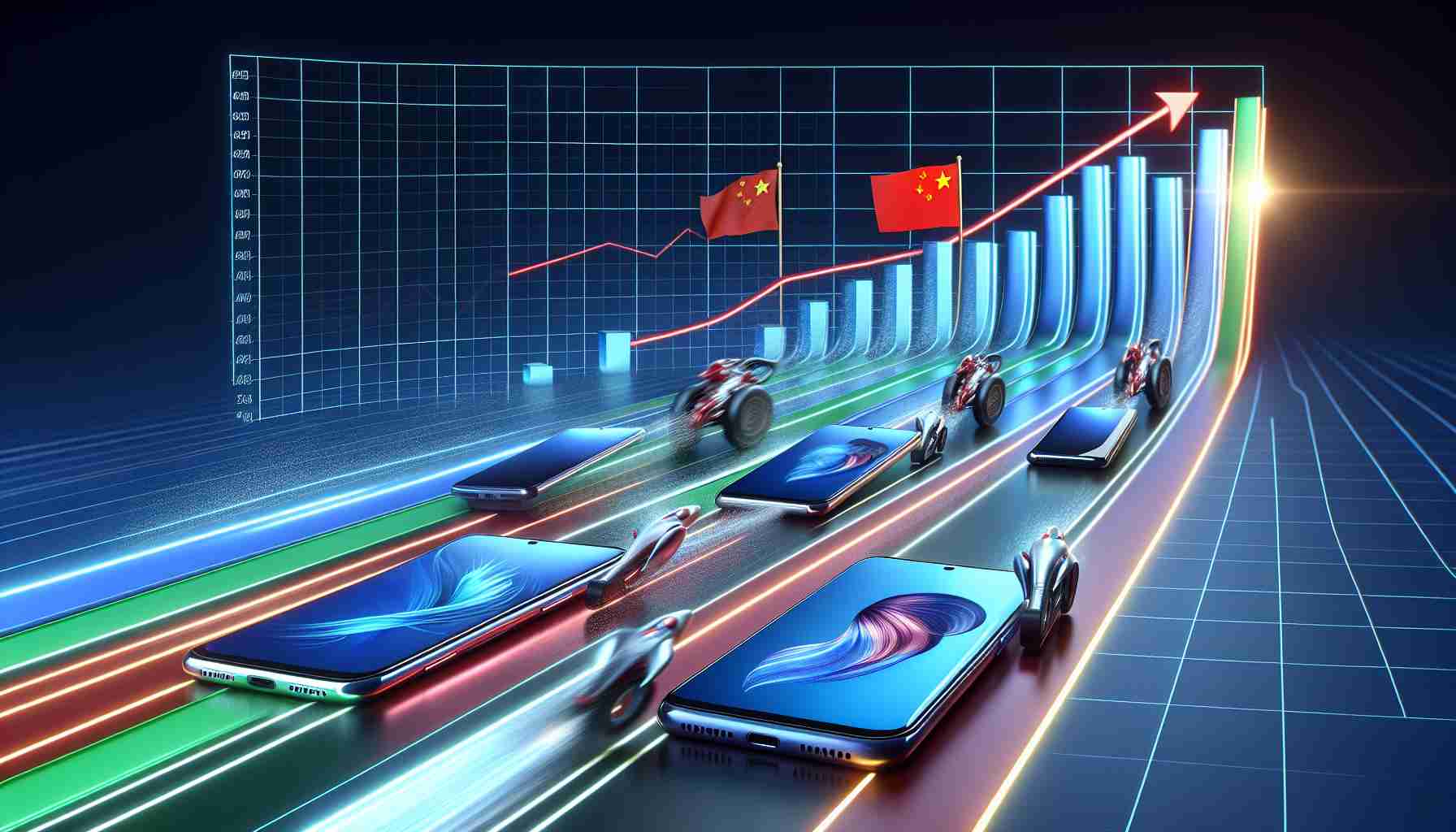Huawei Recaptures Top Position Amid Stiff Competition
Huawei has made a triumphant return to the top of the Chinese smartphone market, asserting a commanding 17% share. The first quarter of 2024 saw the tech company dispatch an astonishing 11.7 million smartphones, which translates to an impressive year-over-year growth of 70%. This spectacular comeback was orchestrated despite the tight constraints of US sanctions impeding access to key technologies.
Meanwhile, America’s tech giant, Apple, witnessed its influence wane in China, stumbling to fifth place as shipment volumes diminished by a quarter to approximately 10 million devices. The reduction in Apple’s presence underscores the fierce nature of competition in the region where domestic brands have upped their game.
Oppo and Vivo Soar as Apple Stumbles
Oppo surged ahead to claim the second spot, credited to the popularity of its Reno 11 series. Vivo also kept its ground among the leaders, even as it saw a small dip in the number of units shipped.
Factors Behind Huawei’s Ascendancy
Huawei’s rise has been fueled by the launch of sought-after devices like the Mate 60 Pro and the development of HarmonyOS, a homegrown operating system. This operating system, which runs on more than 800 million devices worldwide, serves as a strategic pivot away from the ubiquitous Android platform, carving a unique niche for Huawei.
Apple’s Struggles to Retain Market Influence
Conversely, Apple’s lowered sales numbers in China spell out a tough chapter for the company in a market of critical significance. Various initiatives, including the inauguration of flagship stores and bolstering R&D efforts, have so far not successfully stemmed the tide of decreasing iPhone sales. Apple’s CEO has emphasized China’s critical role in their strategy, yet recent figures point to Apple’s diminishing hold in this key territory.
The Bigger Picture
Amidst this shuffle, the overarching smartphone sector in China saw a 7% shrinkage, presenting a more challenging environment across the board for smartphone purveyors.
Important Questions and Answers:
1. What are the key challenges for Huawei in maintaining its lead in the Chinese smartphone market?
The key challenges for Huawei include navigating around the US sanctions that limit its access to critical technologies, such as advanced chips and the Google Play services. Moreover, the company must keep innovating to remain competitive against growing domestic brands and global giants like Apple.
2. How have US sanctions impacted Huawei, and have they affected its global market share?
US sanctions have significantly impacted Huawei, causing a drop in its global market share outside China. These sanctions restrict Huawei’s access to essential components and software from US companies. The company has had to focus on its domestic market and develop alternatives like HarmonyOS to remain competitive.
3. What are the advantages and disadvantages of Huawei’s HarmonyOS?
Advantages:
– HarmonyOS offers Huawei a way to reduce reliance on Android and create an ecosystem that integrates across multiple devices.
– It potentially opens doors for a larger Chinese software ecosystem that can operate independently of Western technologies.
Disadvantages:
– It may struggle to attract a global user base due to the dominance of Android and iOS.
– Developers may be hesitant to invest in a new platform, leading to a scarcity of apps compared to established app stores.
4. Why are Apple’s sales numbers decreasing in China?
Apple’s sales numbers may be decreasing due to several factors including strong competition from local brands offering high-spec devices at competitive prices, ongoing trade tensions between China and the US, and nationalistic preferences among Chinese consumers in light of the US sanctions against Chinese companies, such as Huawei.
5. How is the overall smartphone industry in China evolving?
The industry is evolving with cutthroat competition among domestic and international players, an increased emphasis on homegrown technologies such as operating systems and chipsets, and shifting consumer preferences that demand innovation and value. Additionally, the industry faces external challenges like economic downturns and supply chain disruptions.
Key Challenges and Controversies Associated with the Topic:
– US-China trade tensions: Huawei’s challenges are partly due to geopolitical tensions that affect international trade and technology sharing.
– Technological sovereignty: Huawei’s shift to HarmonyOS reflects a move towards technological sovereignty, where Chinese companies are developing independent capabilities in core technologies, which could have long-term implications for global tech competition.
– Data privacy and security: Any major operating system, including HarmonyOS, must address global concerns regarding data privacy and security to gain user trust, particularly when originating from a country with different data governance standards.
– Global market dynamics: As Huawei focuses on its domestic market, it faces the challenge of maintaining its global presence and reputation in the face of restricted access to certain markets and technologies.
Related Links:
For further reading on these subjects, you may visit the official websites of the companies and organizations involved:
– Huawei
– Apple
– Oppo
– Vivo
Please remember that the URLs mentioned are the official domains of the respective companies, and clicking on them will take you to the homepage, not to a specific article or subpage related to the topic.
